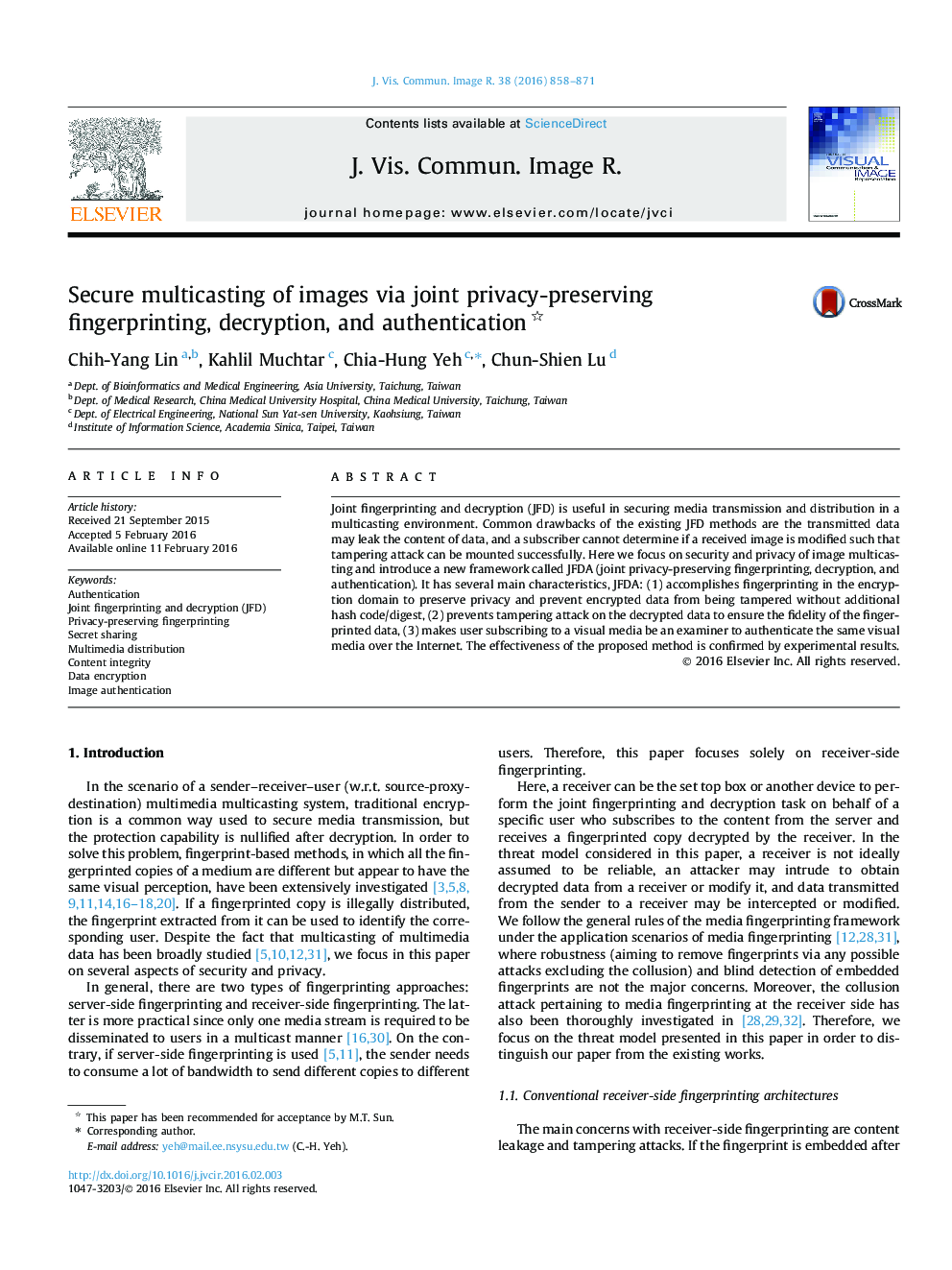| Article ID | Journal | Published Year | Pages | File Type |
|---|---|---|---|---|
| 529717 | Journal of Visual Communication and Image Representation | 2016 | 14 Pages |
•Introduce a joint privacy-preserving fingerprinting, decryption, and authentication.•Prevent encrypted data from being tampered without additional hash code/digest.•Achieve the lightweight encryption/decryption, and low transmission cost.
Joint fingerprinting and decryption (JFD) is useful in securing media transmission and distribution in a multicasting environment. Common drawbacks of the existing JFD methods are the transmitted data may leak the content of data, and a subscriber cannot determine if a received image is modified such that tampering attack can be mounted successfully. Here we focus on security and privacy of image multicasting and introduce a new framework called JFDA (joint privacy-preserving fingerprinting, decryption, and authentication). It has several main characteristics, JFDA: (1) accomplishes fingerprinting in the encryption domain to preserve privacy and prevent encrypted data from being tampered without additional hash code/digest, (2) prevents tampering attack on the decrypted data to ensure the fidelity of the fingerprinted data, (3) makes user subscribing to a visual media be an examiner to authenticate the same visual media over the Internet. The effectiveness of the proposed method is confirmed by experimental results.
